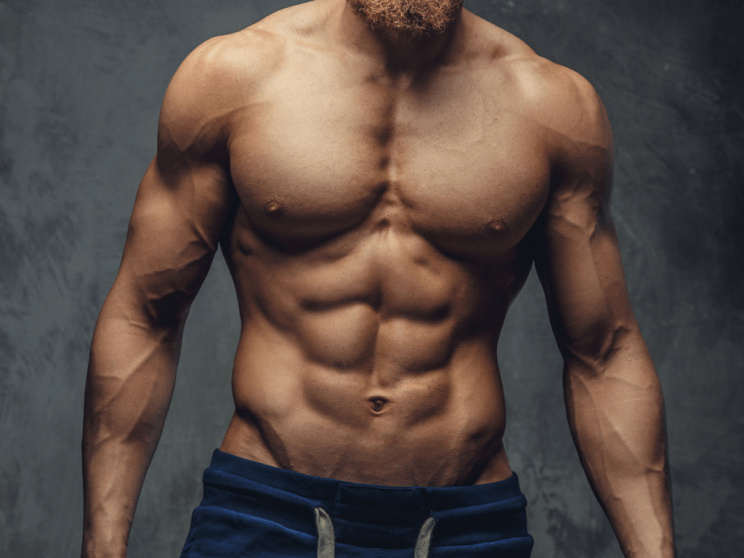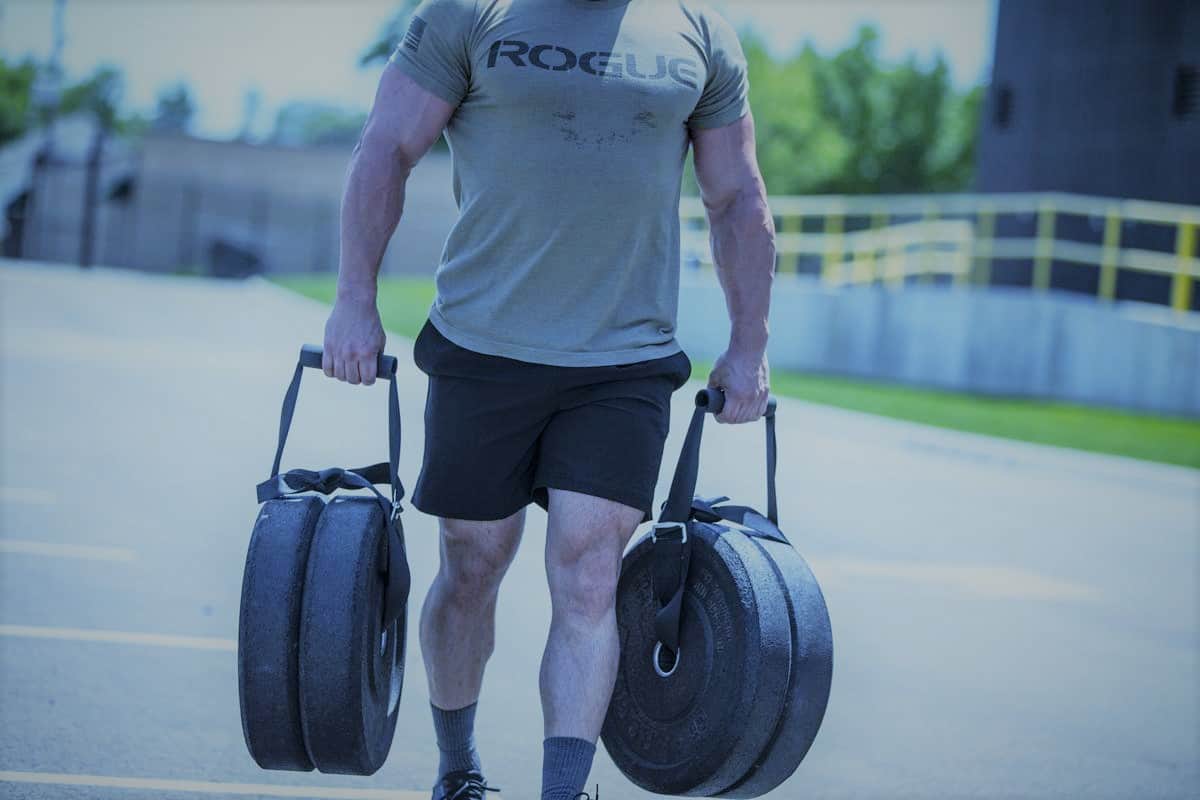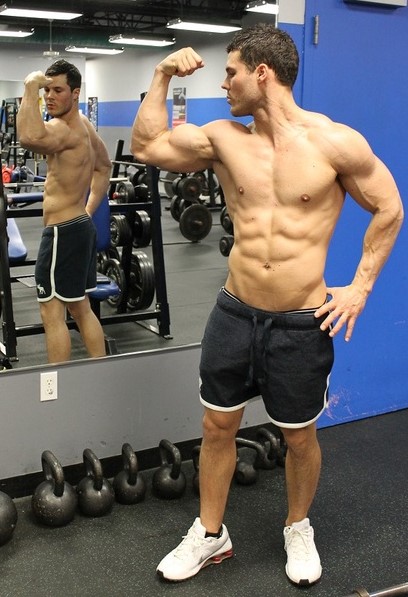If you’ve been lifting for any amount of time, chances are you’ve heard someone mention that if you’re lifting, you basically don’t need to train your abs.
Who cares about crunches and planks and all that boring stuff when you’re lifting heavy weights and bracing and building a strong core through simple compound lifts?
And in a way, that’s true. The beautiful thing about barbell training, at least to me, is that it’s incredibly simple and it’s also quite self-fulfilling.
If your squat sucks, squat more. Keep the weight low enough to make corrections to your form, increase weight until it starts to break down, work on the right cues to fix your problem, and move on.
When it comes to powerlifting as a sport, most of your time should be spent training your lifts and minor variations thereof to target sticking points and weaknesses. Especially early on, when 90-100% of your training should be barbell lifts.
You Need a Strong Core
I’ve been lifting weights for a little while, enough to be out of the novice period.
It’s the long game for me now, and while I’m putting weight on the bar, it’ll take a few years to get to where I want to be.
So, I can also tell you that in all that time, I’ve never experienced back pain or a spinal injury due to lifting. I have had, however, sore abs, especially when my lifts started to get heavy.
When you’re a young lad or lady and you’re learning to brace and press, brace and squat, and brace and lift, your core starts to seriously kick in. Every major lift puts pressure on the muscles surrounding and protecting the spine.
Not Just About Crunches
Contrary to what years of PE might teach you, the best way to train the abs isn’t through contraction and flexion, but through resistance and stability. Our core is designed to keep our spine intact, so we can do things like walk, move, fight, crawl, climb, and exist without pain or impairment.
Functionally, it responds best to external forces. When lifting weight, we breathe in, hold our breath, brace with our core – not just the abdominal wall (rectus abdominus), but all the muscles around it – perform the lift, and exhale.
But the thing is that the soreness lasted about a week or two. After a short while, my body adapted to my bracing technique and even though the weight continued to go up, once I learned how to brace, I never had a sore core due to basic weightlifting ever again.
If you can make an incredibly important muscle group stronger, why wouldn’t you? Life is about more than just pressing, pulling, and squatting. A strong core will keep your spine healthy and in shape – and while deadlifts and rack pulls will make your erectors look like pillars of pure stone, your abdominal wall (rectus abdominus) and obliques won’t be challenged after you figure out how to brace properly. So train your abs.
You Could Do More to Train Your Abs
If your only interest is train your abs for powerlifting, start by lifting. You won’t really build your core, but you’ll build enough abdominal stability to properly perform under or over the barbell.
But if your interests are in general strength, the ability to do more than just barbell lift, perform well in a sport, or just be all-around stronger not just in the sense of the push and the pull, then having a really powerful core matters. And you’re not going to get there doing just squats, or god-forbid, crunches.
What Are the Abs?
Before we can train for something, we should understand how it works. Your quadriceps, for example, exist to straighten the leg. They don’t make you rotate your femur inside its socket or fold the leg. The most efficient way to train a quadricep is to contract it and stretch it. Doing this with resistance builds strength and causes your muscles to grow.
Your abs, on the other hand, don’t function primarily to flex. They stabilize. Abs usually refers to the six-pack we see on many athletes and fitness models, but the abdominal wall is one part of the general core: your obliques, abdominal wall, serratus and erectors are muscles that wrap around the front and back of the body, just under your pecs and around the base of your lats, alongside other muscles like the diaphragm that help you breathe, brace, and stay stable in the face of impact.
Your core allows you to twist, extend the spine, and bend forwards, backwards, and to the side. But research shows that ab strength isn’t built by contracting the muscles in your core, but by resisting greater amounts of force. If you want to train your abs, you’ll need to resist force.
Training Abs Properly
If you’ve ever seen Olympic weightlifters, you’ll know that they have really big traps. However, they don’t do a lot of shrugs. Instead, they do a lot of pulls, snatches, and cleans. The traps are stabilizing muscles, basically helping your shoulders keep your arms inside their respective sockets while weight is pulling them down.
This is why the most effective exercises for the traps are power shrugs and rack pulls. Think about it – your traps barely contract, so why move minimal weight for a tiny range of motion with lame shrugs when you can overload the crap out of them with a super heavy rack pull?
Your core works the same way. Sure, you can do Russian twists, crunches, leg raises and windshield wipers. But with what resistance? To train your abs, you’ll want a little weight.
Using Resistance To Train
You’re not going to be doing a lot of side bends with a hundred pounds or more. But you can pick what off the floor and just keep yourself perfectly upright, so your obliques don’t bend.
Your core doesn’t need to contract and stretch like a lot of other muscles – it needs to stay stable in the face of a ton of resistance, and that’s how it’s going to get stronger.
Crunches might engage your abdominals and can be useful for beginners with minimal ab strength, but they’re not a very efficient way to train your abs.
Instead, you’ll want to focus on exercises that challenge the stability and resistance of your entire core, building a rock-solid midsection that can stay strong and stable with hundreds and hundreds of pounds stacked onto your shoulders – or do many other things.
Anti, Anti, Anti
Don’t get me wrong, I don’t want to give heavy deadlifts and back squats a bad rap. In fact, they’re perfect for a strong back. Someone with a massive triple bodyweight deadlift is going to have ridiculously strong obliques, erectors, serratus posterior, and quadratus lumborum (muscles supporting the lower half of the spine).
But their anterior core won’t be quite as strong as their back core. One way to remedy that is with a ton of front squats and overhead presses, but even that won’t challenge your abdominal wall, instead packing more size and definition onto your serratus anterior and intercostal muscles. For a stiffer spine and washboard abs, you’ll want to supplement lifting with a couple basic but really useful core movements surrounding:
Anti-extension – this means not extending or stretching your core while something is trying to make it bend. Planks are example of this.
Anti-rotation – this means not twisting or turning. The Pallof press is an example of this.
Anti-lateral-flexion – this means not letting your body bend sideways. Unlike anti-rotation, which is about not twisting or turning, anti-lateral-flexion is about staying upright while something is trying to pull you to one side or the other. Suitcase deadlifts are an example of this.
Other Exercises
Once you basically understand what these three things are, it’s pretty easy to program your strength training and add a few core movements to the beginning (to prime yourself) or end (to train your core).
Some basic ones include the ab rollout, which is a perfect progression from the front plank for anti-extension. Both side planks and one-armed loaded carries/suitcase carries are great for anti-lateral flexion. For anti-rotation, try a one-armed horizontal press (either a dumbbell bench press or a pushup) and landmine press.
Do Loaded Carries
Probably my favorite way to train the core on a regular basis is the loaded carry. Loaded carries can be done in a lot of different ways to train the core, starting with a regular loaded carry or farmer’s walk, then moving onto a suitcase carry and a waiter carry. I do two of these thrice a week, and they’re simple:
- Farmer’s walk: pick up two heavy weights and walk around. Do these at least twice a week – once with a ton of weight for a short distance, and once with heavy weight for a long distance. You can pick up a pair of heavy dumbbells and walk around the gym.
- Suitcase carry: pick up a heavy weight in one hand and keep yourself from leaning into it. Make sure it’s heavy, but not so heavy that you can’t stay upright. Pick it up and walk. Repeat for the other side.
- Waiter carry: pick up a kettlebell or dumbbell and press it overhead. Walk around with the weight upright, your arm internally rotated (elbows facing outward, thumb inward). This will build the serratus and intercostals and can be tiring on the deltoids after a long shoulder day.
You shouldn’t train the same movement every single day – if you’re doing that, you’re probably not really training the core properly. Do it like any other movement, twice or thrice a week.
Want to lift heavier and avoid injuries? 💪🔥
Download our FREE '5-Minute Warm-Up Routine for Maximum Lifting Performance' and get primed for every workout!
Click below to grab your copy now!👇
👉 Download the Free Guide




